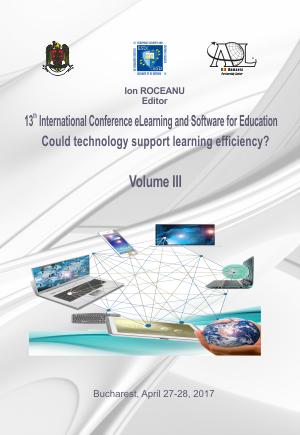SMART EDUCATION AND SMART E-LEARNING
SMART EDUCATION AND SMART E-LEARNING
Author(s): Carmen-Leocadia Pesantez PozoSubject(s): Social Sciences
Published by: Carol I National Defence University Publishing House
Keywords: Smart Education; Smart e-Learning; distance education; nonformal and informal learning; Internet technologies.
Summary/Abstract: Smart Education and Smart e-Learning (SEEL) represents the integration of smart technologies and tools, smart educational software and hardware systems, innovative pedagogy, advanced teaching strategies and learning methodologies and approaches tightly connected with flexibility, accessibility, openness, assessment, security, communication through modern services of social networks, collaboration and the challenges of the Information Society and the knowledge-based economy. The concept refers also to the smart e-learner modeling of next generation to work in smart learning environments based on adaptive learning programs and their educational outcomes including life skills – social, cultural, ethical, creativity, leadership as well as computer literacy and logical, analytical and critical thinking – that help to achieve success and recognition. Learning performance is determined mainly by training strategies. Virtualization trend of the real world is also reflected in traditional education – thus e-learning represents a natural tendency of evolution. By means of technologies and well-known educational institutions and publishers, Smart Education provide e-learning programs to meet the needs and interests of students, teachers and parents, as well. On the other hand, Smart Education can also be involved in charitable events and projects for the communities. Nowadays, educators strive to make e-learning more global, innovative, inclusive and learner-centered. In this context, SEEL can be regarded as a large perspective and a revolutionary concept based on Internet technologies of distance education, as a tendency of education in a near future and as a project of building a learning interactive community, designed for learning without boundaries.
Journal: Conference proceedings of »eLearning and Software for Education« (eLSE)
- Issue Year: 13/2017
- Issue No: 01
- Page Range: 89-95
- Page Count: 7
- Language: English

